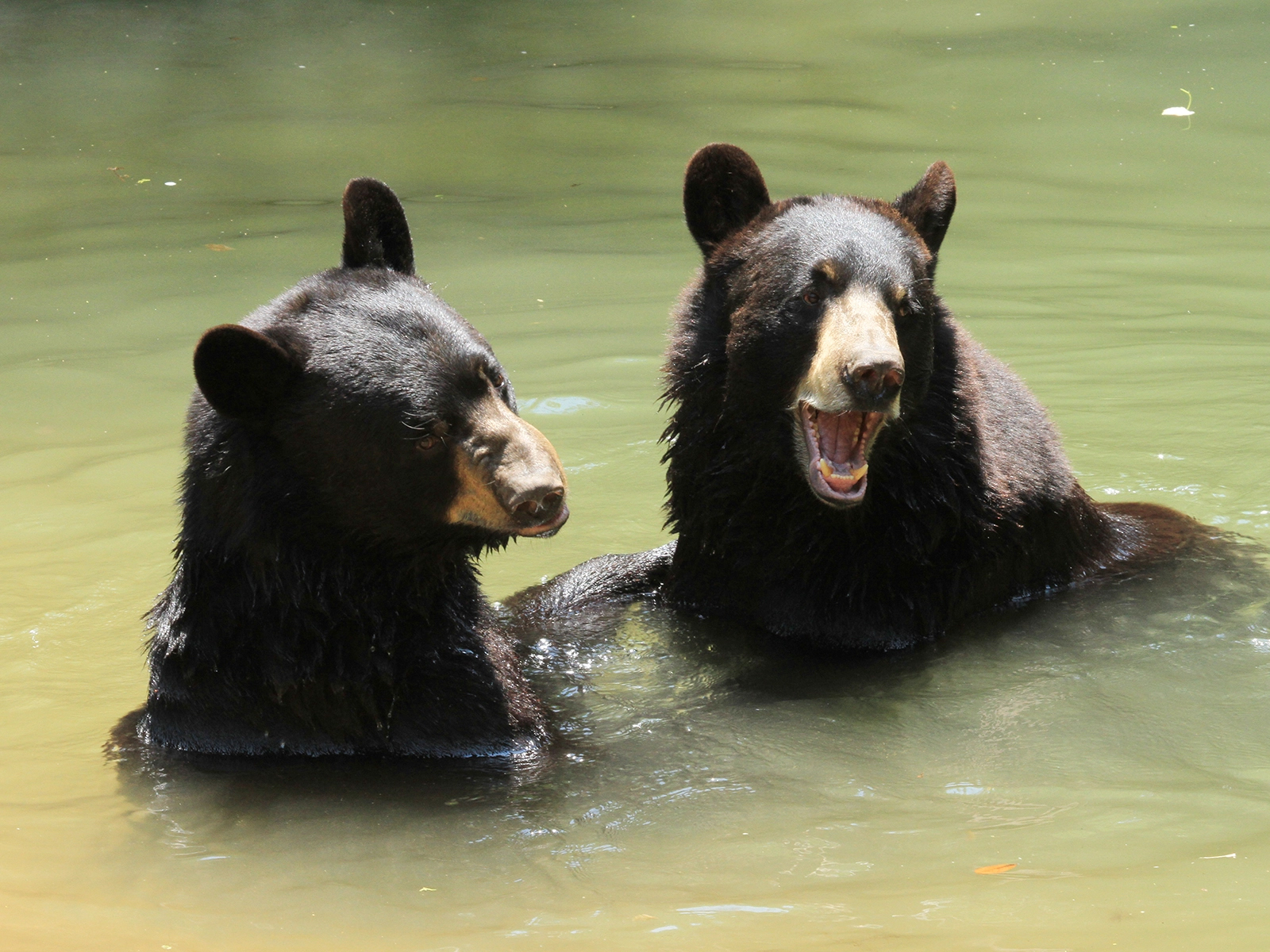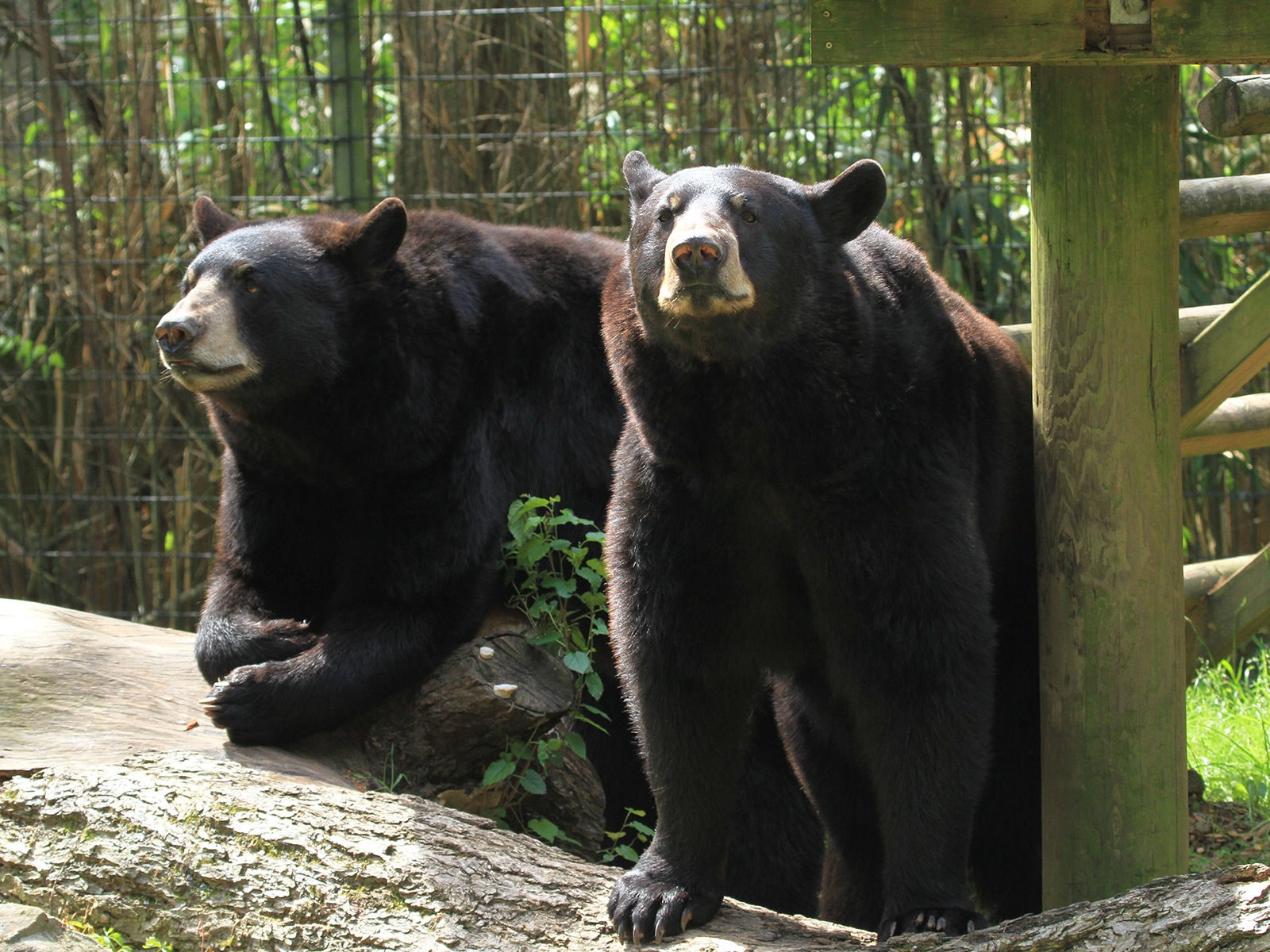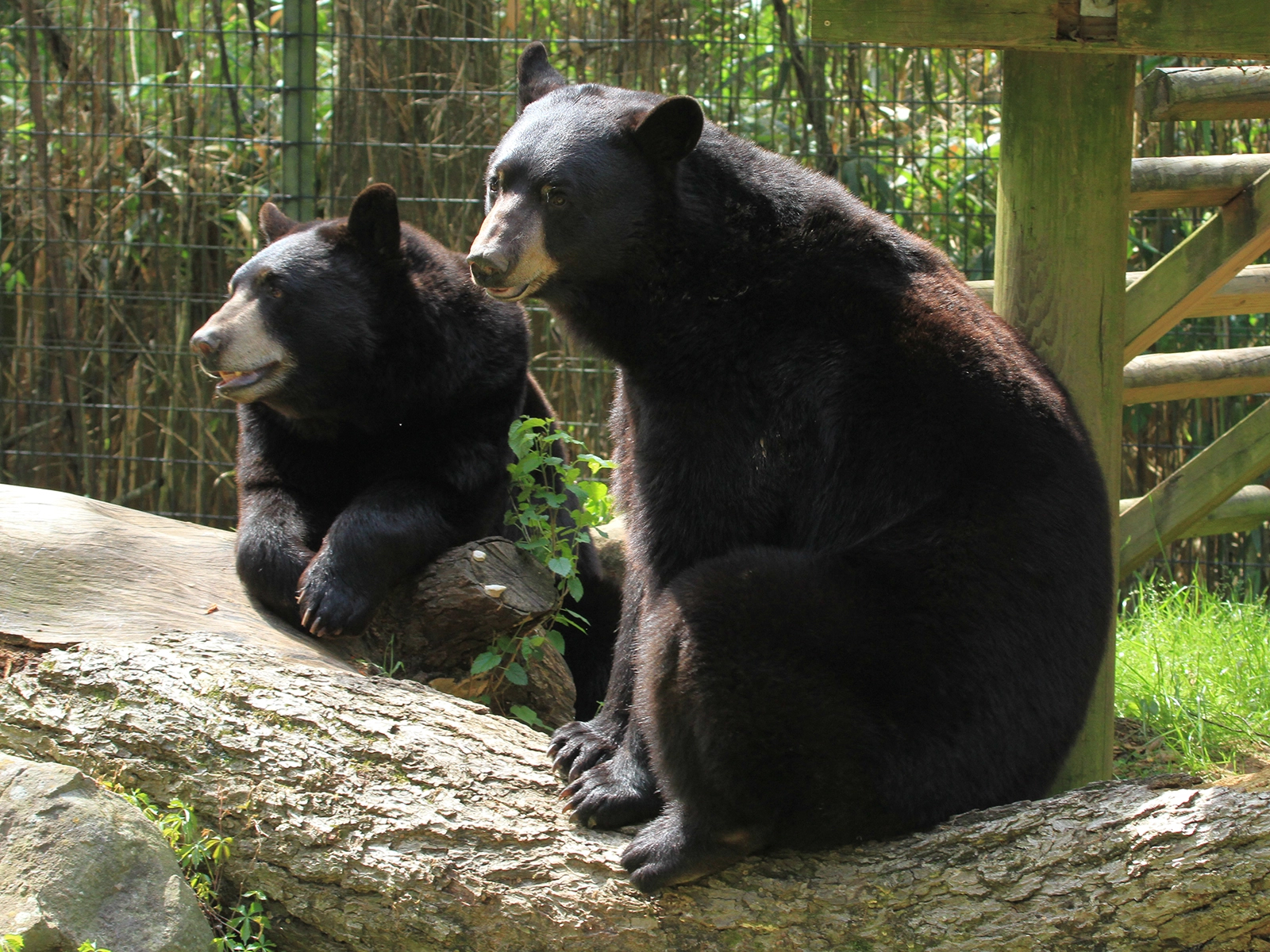American Black Bear
Ursus americanus
Class
Mammalia
Order
Carnivora
Family
Ursidae

Mammalia
Carnivora
Ursidae
North America
Length: 4 - 6 feet
Male Weight: 150 - 350 lbs.
Female Weight: 120 - 250 lbs
Any type of woodland; rarely leaves forests
1 - 5 cubs
Gestation Period: Approximately 7 months
Grasses, fruits, berries, nuts, insects, human foods, and occasionally small vertebrates
Least Concern
Their reasoning ability, long-term memory, omnivorous food habits, dexterity, speed, strength, sense of smell, and elusive behavior have made them one of the world's most adaptable carnivores.

American black bears are the smallest bears in North America. Fur color of the species varies greatly, ranging from blond through beige, cinnamon, blue-white, and dark brown to light black.

Cubs are born in the mother's winter den in January or February. At birth, they weigh about 0.5 pound and are blind. Cubs are weaned at around 8 months but may remain with their mother the first year, den with her the following winter, and search for their own territory in their second summer.

The Louisiana black bear (Ursus americanus luteolus), Louisiana's state mammal, is one of 16 subspecies of the American black bear.


Chipp and Obie were born in the wild in early 2016 in Minnesota. The two brothers became orphaned and were moved to a rehab facility in Minnesota. Providing refuge for orphaned wild animals is an important role that zoos are sometimes able to fill, depending on timing and space availability. The boys arrived at Alexandria Zoo in December 2016 and quickly adapted to their new home.
While they share a brotherly bond, they have distinct preferences for relaxation. Chipp, the more sizable of the two, enjoys classic summer pastimes and can often be spotted napping in their hammock or wading in the large pool. Obie, however, has a taste for luxury and prefers the bubbling waters of the smaller, aerated "jacuzzi" pool. Despite their different lounging styles, their culinary tastes align perfectly when it comes to their favorite snacks: peanuts, romaine lettuce, and blueberries.
By 1980, more than 80 percent of the Louisiana black bear's habitat had been modified or destroyed, and on January 7, 1992, the bear was listed as threatened within its historic range. On March 10, 2016 the U.S. Fish and Wildlife Service removed the species from the Lists of Threatened and Endangered Wildlife under the Endangered Species Act due to recovery. Recovery was made possible thanks to the active partnerships of many private landowners, state and federal agencies, universities and non-governmental organizations.
Practice Bear-Wise Habits: The most significant source of human-bear conflict is the availability of human food sources. Ensure that you never intentionally feed bears. In areas where bears are present, secure all garbage, pet food, and recycling.
Advocate for habitat protection: The American black bear's habitat, particularly mature bottomland hardwood forests, is vital to its survival. Supporting programs and policies that protect and restore these forests on both public and private lands is critical.
Be a Responsible Outdoors Enthusiast: Keep campsites clean by storing all food and garbage in bear-proof containers and never leave food unattended. Be mindful of your surroundings and know what to do if you encounter a bear.
